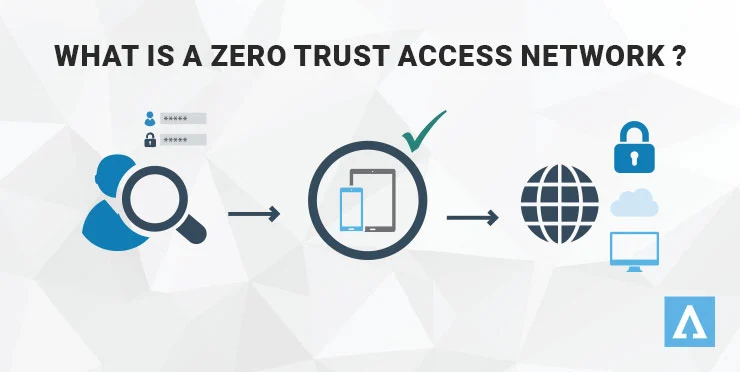Enhancing Security With Zero Trust Network Access
The Zero Trust network access (ZTNA) security model is a new way of securing your organization’s infrastructure. It considers all entities as potentially malicious until proven safe, which reduces vulnerabilities resulting from in-network lateral attacks. This framework provides visibility and continuous verification and limits the blast radius in case of a breach.
How It Works
Zero trust network access is based on “never trust anything that nothing on a network is trusted by default – not end users, devices, and processes. Instead, access is verified continuously and only granted when it’s safe. This limits lateral movement through the network and minimizes damage if a breach does occur. To be effective, zero trust requires granular visibility and reporting on the status of users and their devices. It also relies on identity and access control, which requires near-constant updates to user identities, roles, and permissions, and ongoing assessment of devices to ensure they are secure. This isn’t easy with traditional security tools, especially those that use a perimeter-based approach. To address these challenges, enterprises should consider a solution that provides SASE and zero trust network access (ZTNA).
Benefits
With the rise of remote working, employees need access to applications and data from anywhere. This brings new security risks as traditional perimeters are removed, and devices are connected to the internet. Zero-trust networks eliminate this implicit trust by requiring authentication and authorization on every device and user. Traditional security models use a castle-and-moat model, distrusting everything outside the network perimeter. This allows threats that have already penetrated the network to wreak havoc inside. ZTNA uses identity authentication to create a single, secure segment around each asset, verifying each connection as an authenticated user and device. These boundaries control traffic flow and limit threat movement in case of a breach. The architecture also follows the principle of least privilege, granting users only what they need to do their job and continuously re-assessing permissions. This is particularly important when leveraging tools such as service accounts, which are often overly permissioned and easily exploited. Look for a solution that offers adaptive access to cloud and on-premises assets with granular visibility and reporting. It would be best to get automated protection and remediation, reducing the load on your SOC analysts. Finally, choose a solution that can be deployed quickly and in stages. This will reduce the cost and time to implement and minimize the impact on employee productivity.
Implementation
Zero trust network access requires the correct set of security technologies to implement. These can ensure access to applications and resources is verified, authorized, monitored, and continuously adaptive. Microsegmentation is also critical to Zero Trust deployment because it separates application assets from the rest of your network. This removes the ability for threats to move laterally from compromised machines and devices into sensitive areas of your environment and mitigates the impact of a breach. The best zero-trust network access solutions offer visibility into connected users and devices, and they use these capabilities to prevent threats from entering your environment. As you move to Zero Trust, you may notice that some legacy or third-party applications must more easily conform to this security model. This can be a challenge for organizations and slows down progress toward the ideal security posture. Fortunately, tools can help overcome these challenges and enable your organization to implement a fully zero-trust architecture without ripping out all existing infrastructure. Zero Trust aims to eliminate the attack surface by prioritizing security and ensuring that users only get access to the data they need for their role. The challenge is how to do this in a way that doesn’t negatively impact productivity or create roadblocks in workflows.
Troubleshooting
Zero trust security is a new concept that requires rethinking how networks are configured. As a result, zero trust implementation can bring unexpected challenges impacting users and productivity. For example, users not adequately authenticated before entering the network may be blocked from accessing applications, resources, or other work-related services. To resolve this issue, ensure all the relevant authentication methods are in place and working correctly. Additionally, it’s a good idea to enable a feature that allows for additional authentication via SMS for users who require it to access sensitive apps. Another challenge can be the need to verify that users are who they say they are and not spoofed by attackers. To accomplish this, zero trust implements granular devices and user attributes continuously reviewed for integrity by a gateway. This can include a combination of identity, location, and behavior analytics. Adding zero trust capabilities to an organization’s network architecture requires the collaboration of security, networking, and IT teams. To ensure a successful deployment, it’s essential to have clear communication and pieces of training for both the IT staff and the business. Organizations can foster an environment that promotes security and productivity by placing user experience (UX) at the forefront of a ZTNA implementation.






